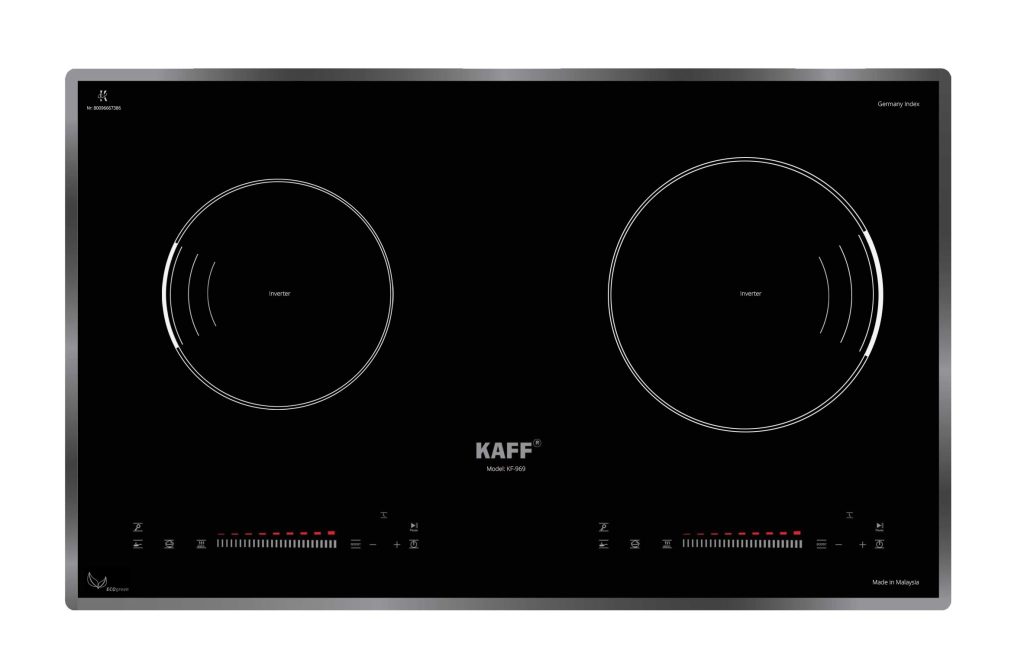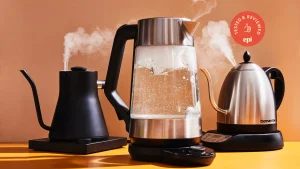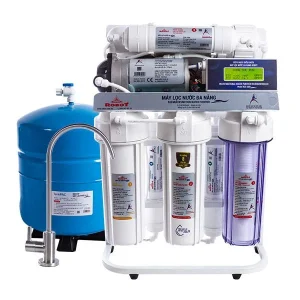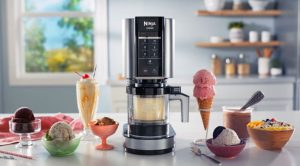Induction Cooktop: What Is It? How It Works, Applications, and Safe Usage Tips

An induction cooktop is a modern and energy-efficient kitchen appliance that uses electromagnetic energy to cook food. This type of cooktop offers several advantages over traditional gas and electric stoves, including faster cooking times and more precise temperature control. In this article, we will explore what an induction cooktop is, how it works, its practical applications, and how to use it safely.
1. What Is an Induction Cooktop?
An induction cooktop is a type of cooking appliance that heats pots and pans directly using electromagnetic induction rather than traditional methods like gas or electric heating. This technology offers several benefits, including quick heating, energy efficiency, and precise control over the cooking temperature.
Common Types of Induction Cooktops:
- Portable Induction Cooktops: These are standalone, countertop units that can be easily moved and used anywhere there is a power outlet. They are ideal for small kitchens, dorm rooms, or temporary cooking setups.
- Built-in Induction Cooktops: These units are installed into your kitchen countertop and are often part of a larger cooking range or system. They typically feature multiple cooking zones and sleek, modern designs.
- Freestanding Induction Ranges: A freestanding induction range combines an induction cooktop with an oven, offering a complete cooking solution for a more traditional kitchen setup.
Benefits of Induction Cooktops:
- Faster Cooking: Induction cooktops heat up pots and pans directly, which results in faster cooking times.
- Energy Efficiency: Since the heat is generated directly in the cooking vessel, there is less wasted energy, making induction cooking more efficient than other methods.
- Precision Temperature Control: Induction cooktops allow for precise control of cooking temperatures, making it easier to cook food to perfection.
2. How Does an Induction Cooktop Work?
An induction cooktop works by using electromagnetic fields to generate heat directly in the cookware. Here’s how the process works:
Key Components of an Induction Cooktop:
- Coil of Copper Wire: Under the cooktop surface is a coil of copper wire. When an electric current passes through the coil, it creates a magnetic field.
- Electromagnetic Field: The magnetic field generated by the coil induces an electric current in the base of the cooking pot or pan.
- Cookware (Pan): The cookware used with an induction cooktop must be magnetic (i.e., made of ferrous metals like cast iron or stainless steel). The magnetic field generated by the cooktop induces heat in the cookware, which is then transferred to the food.
- Control Panel: The cooktop has a digital or touch control panel that allows the user to set the temperature, cooking time, and select different cooking zones.
The Cooking Process:
- Magnetic Induction: When the cooktop is turned on, the electric current flows through the copper coil beneath the surface, creating a magnetic field.
- Heat Generation: The magnetic field induces electric currents (known as eddy currents) in the base of the pot or pan, which causes the metal to heat up.
- Food Cooking: The heat generated in the cookware is transferred to the food, cooking it efficiently and evenly.
Because the heat is generated directly in the cookware, the cooktop itself remains cool to the touch, except for the area where the cookware is placed.
3. Applications of Induction Cooktops
Induction cooktops are versatile and can be used in a wide range of applications, from home cooking to commercial kitchens. Here are some of the most common uses:
Residential Use:
- Home Kitchens: Induction cooktops are becoming increasingly popular in home kitchens due to their energy efficiency, fast cooking times, and precise temperature control. They are a great option for busy households or anyone looking for a sleek, modern cooking solution.
- Small Kitchens: Portable induction cooktops are perfect for apartments, dorm rooms, or small kitchens where space is limited. They offer a compact cooking solution without sacrificing performance.
- Cooking Enthusiasts: For those who enjoy cooking, induction cooktops offer a high level of control and precision. They are ideal for delicate dishes that require specific temperature ranges, such as melting chocolate or simmering sauces.
Commercial Use:
- Restaurants and Catering: Many restaurants and catering businesses use induction cooktops because they offer quick heating, precise control, and energy efficiency. This allows chefs to cook food faster and more consistently.
- Food Trucks: Induction cooktops are often used in food trucks due to their portability and ability to heat food quickly without using an open flame.
- Hotels and Resorts: High-end hotels and resorts often use induction cooktops in guest kitchens, allowing for fast and efficient meal preparation.
Special Use Cases:
- Outdoor Cooking: Portable induction cooktops can be used outdoors, especially in camping or outdoor cooking scenarios, where electricity is available.
- Test Kitchens and Laboratories: Induction cooktops are sometimes used in culinary test kitchens or food science laboratories due to their precision and control over cooking temperatures.
4. How to Use an Induction Cooktop Safely
Using an induction cooktop is straightforward, but like any appliance, it is important to follow safety guidelines to ensure safe operation and maintain the appliance’s longevity.
Installation and Setup:
- Proper Placement: Make sure the induction cooktop is placed on a flat, stable surface with adequate ventilation. Avoid placing it in areas where it could overheat.
- Cookware Compatibility: Only use magnetic cookware with induction cooktops. Test your pots and pans by checking if a magnet sticks to the bottom. If it does, the cookware is suitable for induction cooking.
- Electrical Safety: Plug the induction cooktop into a properly grounded electrical outlet. Never use an extension cord or plug the cooktop into a power strip.
Cooking Tips:
- Temperature Control: Use the control panel to set the desired temperature or power level. Induction cooktops offer precise temperature control, so start with a lower heat setting and gradually increase it as needed.
- Avoid Overheating: While induction cooktops heat up quickly, avoid overheating the cookware by monitoring the cooking process. Most cooktops have an automatic shut-off feature if overheating occurs.
- Cooking Surface: The induction cooktop surface will remain cool except for the area directly beneath the cookware. However, be cautious around the edges of the cooktop as they may still be warm after cooking.
Regular Maintenance:
- Cleaning the Cooktop: After cooking, allow the cooktop to cool down before cleaning it. Use a damp cloth and a mild detergent to wipe down the surface. Avoid using abrasive materials that could damage the cooktop.
- Preventing Spills: Always use the correct size of cookware for the induction zones to avoid spills that could cause burns or damage. If food spills onto the cooktop, clean it promptly to prevent stains.
- Check Cookware Condition: Regularly check your cookware for wear and tear. Damaged or warped cookware can affect the efficiency of the induction cooking process.
Safety Precautions:
- Turn Off When Not in Use: Always turn off the induction cooktop when you’re finished cooking. Even though the cooktop itself remains cool, the cookware can retain heat for a while.
- Keep Children Away: Induction cooktops can be dangerous for young children, as the surface can heat up near the cookware. Always supervise children around the cooktop.
- Avoid Using Non-Compatible Cookware: Only use cookware that is magnetic. Non-magnetic cookware will not work on induction cooktops and could damage the appliance.
Conclusion
Induction cooktops offer a modern and efficient way to cook, combining speed, energy efficiency, and precision. They are suitable for various applications, from home kitchens to commercial establishments. By understanding how induction cooktops work and following safe usage guidelines, you can enjoy faster and safer cooking experiences. Whether you are upgrading your kitchen or adding a portable unit for convenience, an induction cooktop is a versatile and valuable appliance that can enhance your cooking skills.







